Abstract
A stable phage-carrying strain of Nocardia erythropolis was isolated from an infection with the nocardiophage φEC. Growth of the strain in phage-specific antiserum for 48 hr produced cured organisms at a frequency of about 0.5%. Spontaneous curing, determined by serial single-colony isolations, was less than 0.4%. The strain could not be infected by phage φEC nor by a closely related phage, φC, although the cells were able to adsorb these phages. In cell populations, a frequency of 2.5 × 10−4 cells spontaneously induced. The growth rate of the strain was comparable to that of the uninfected wild-type N. erythropolis. Ultraviolet irradiation or treatment with mitomycin C induced the strain to produce larger numbers of phage. It was concluded that the isolated strain was lysogenic.
Full text
PDF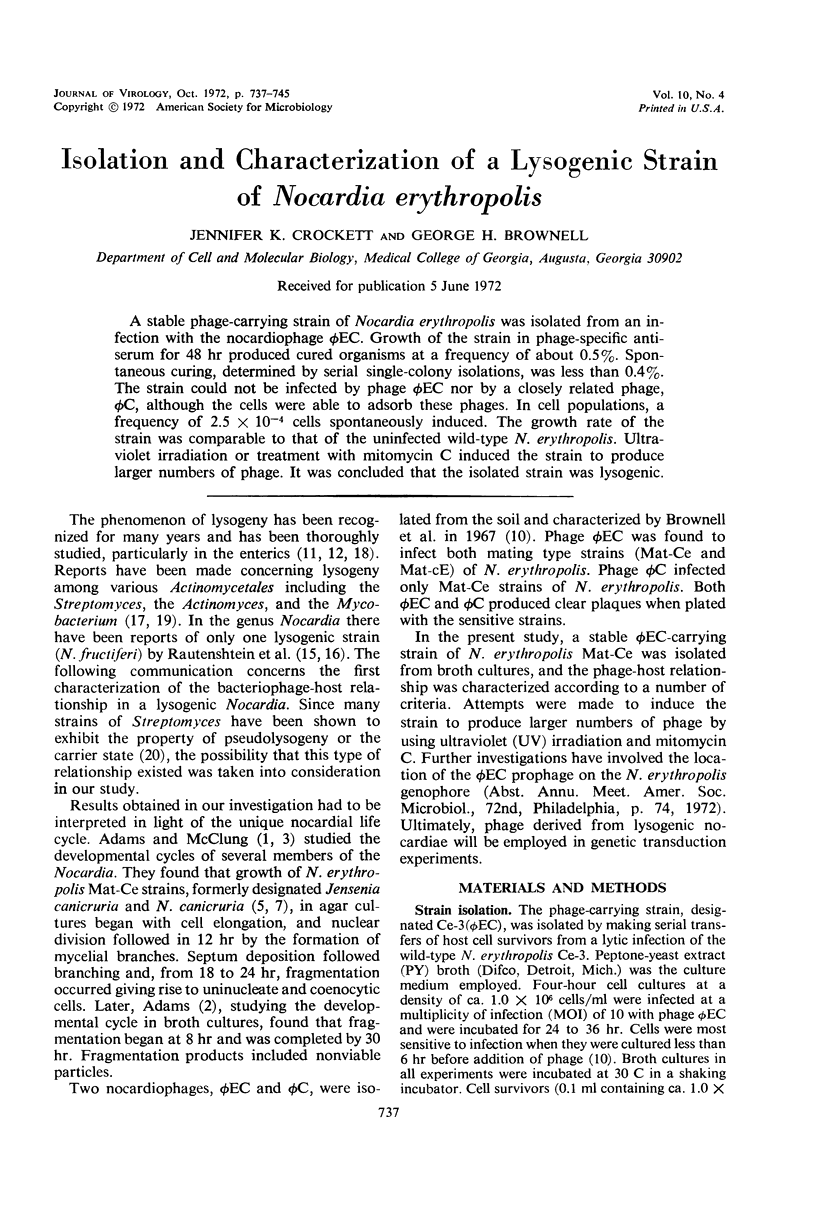
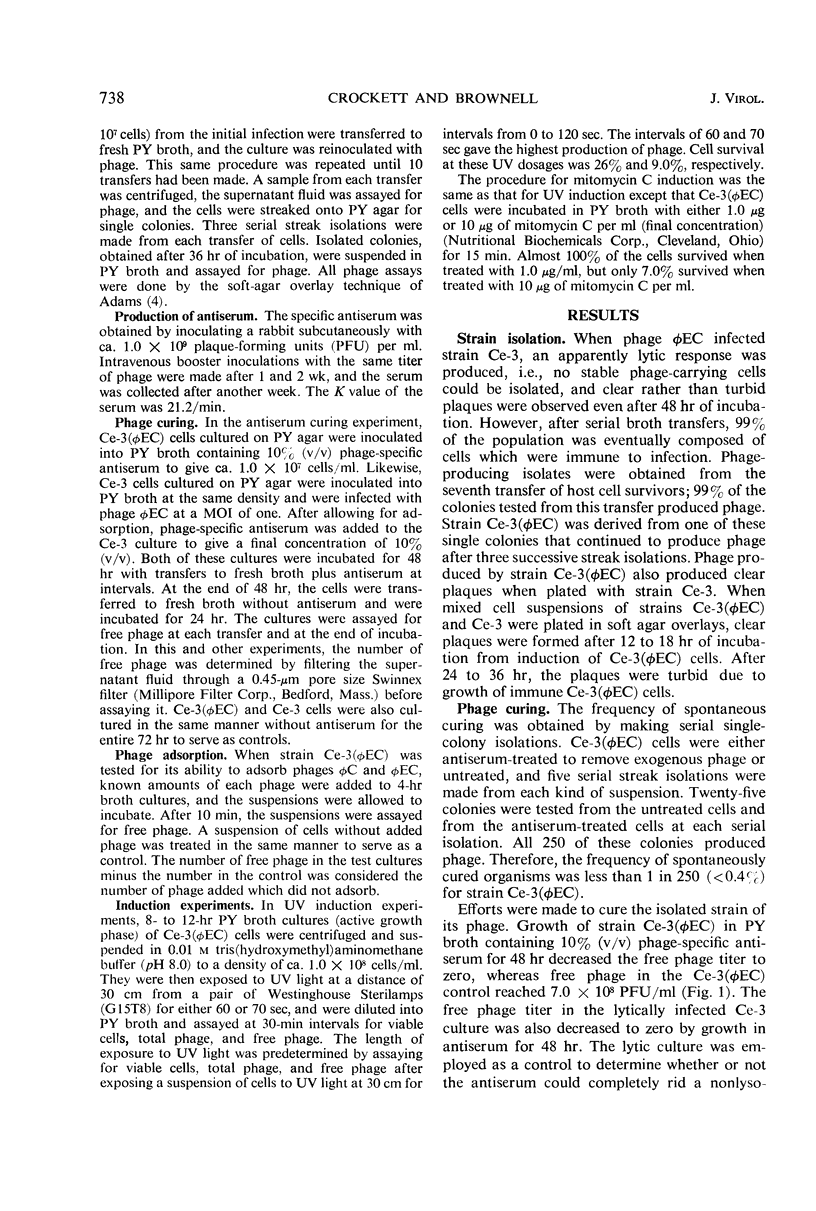
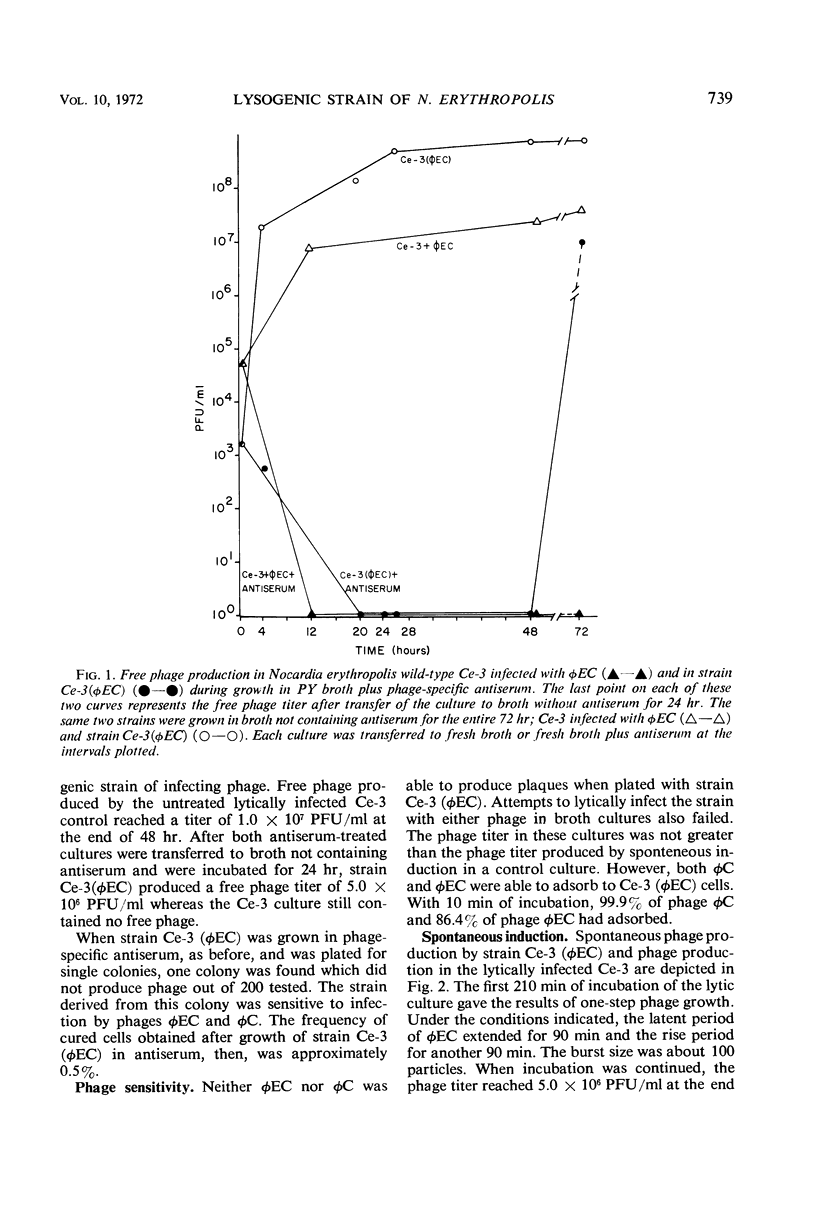
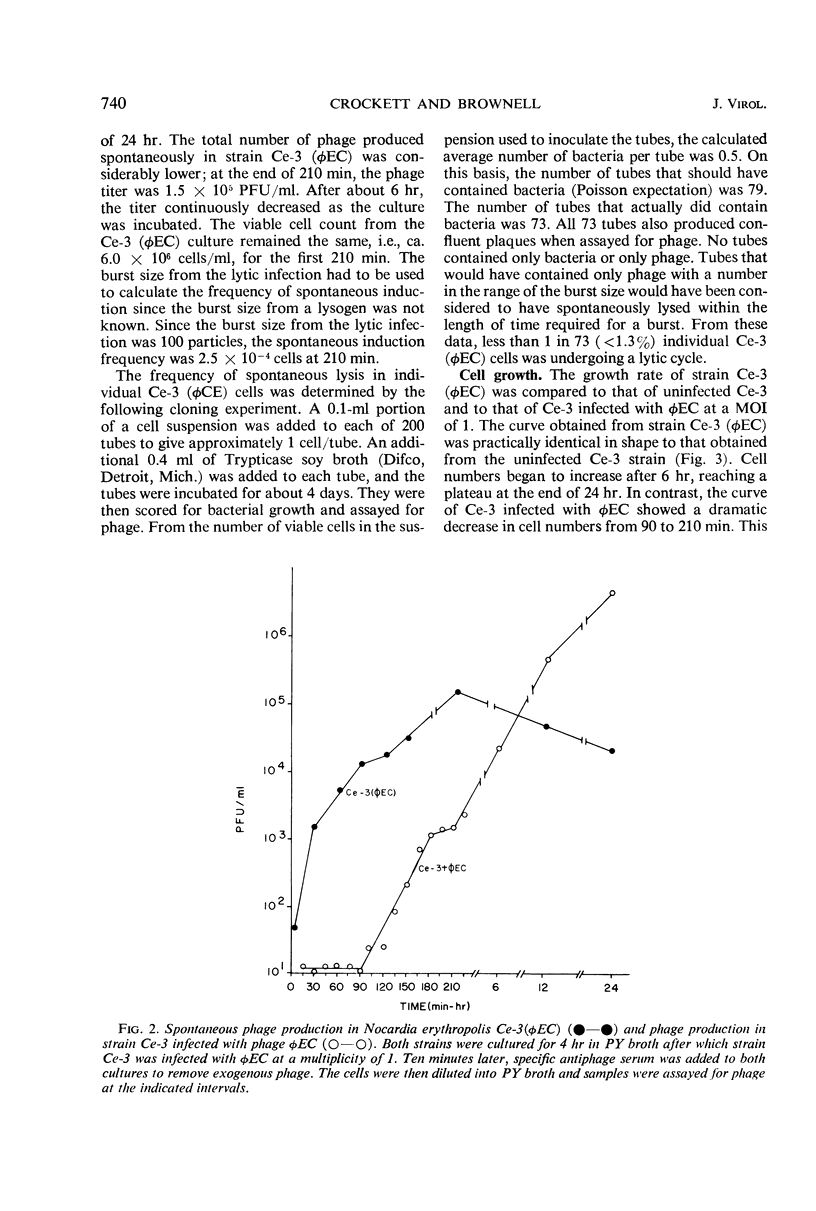
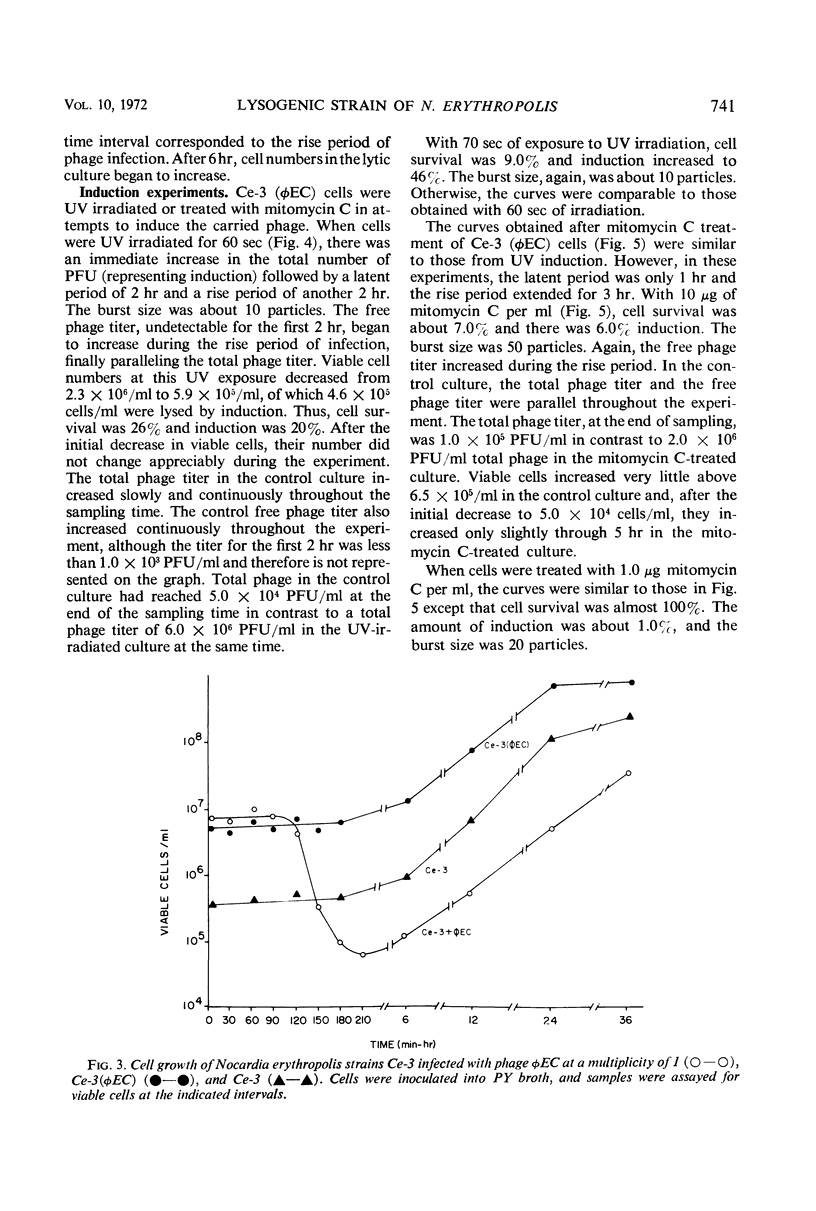
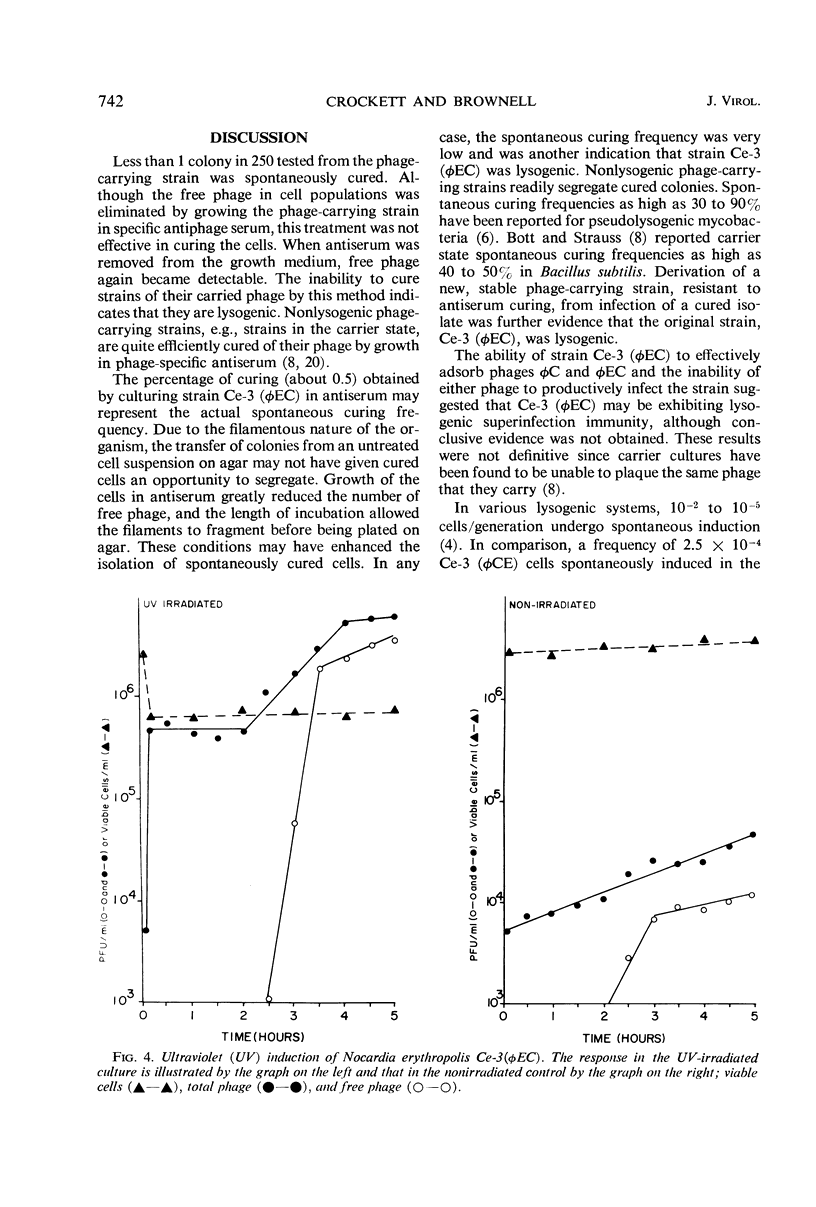
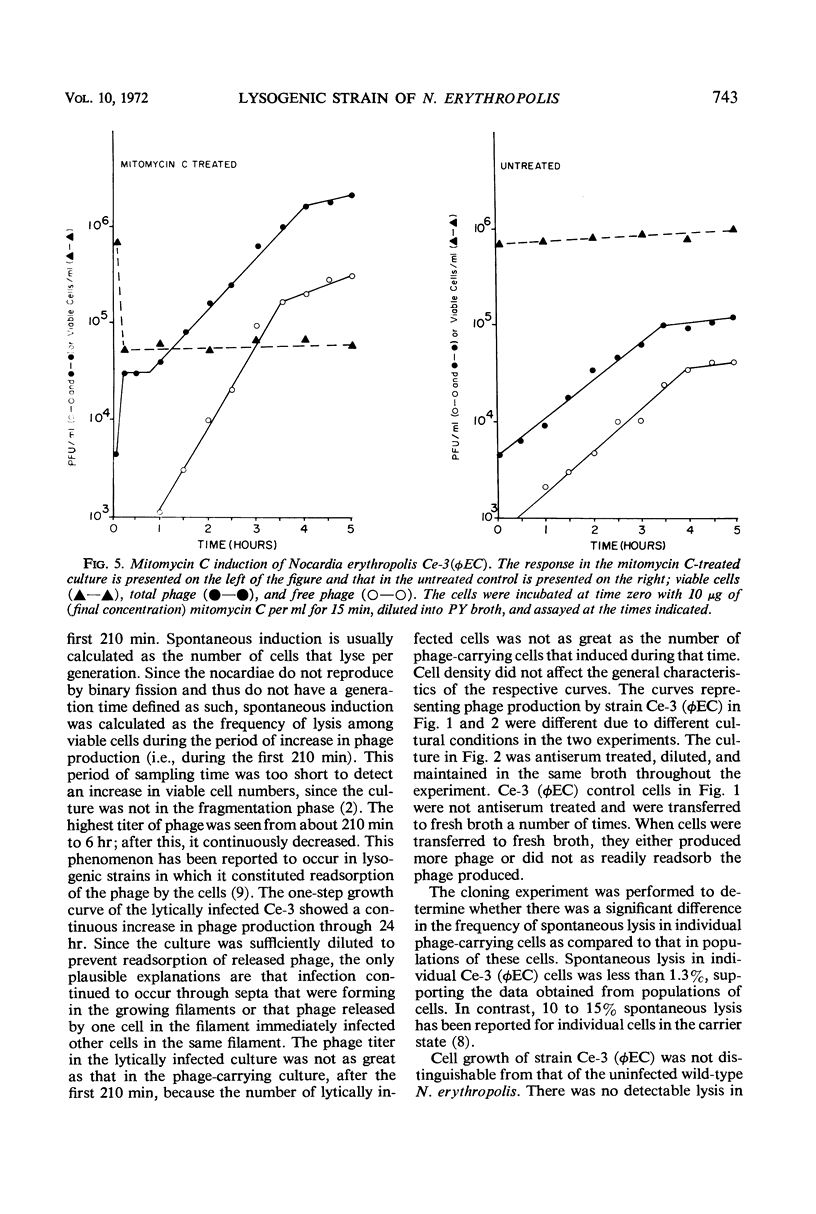
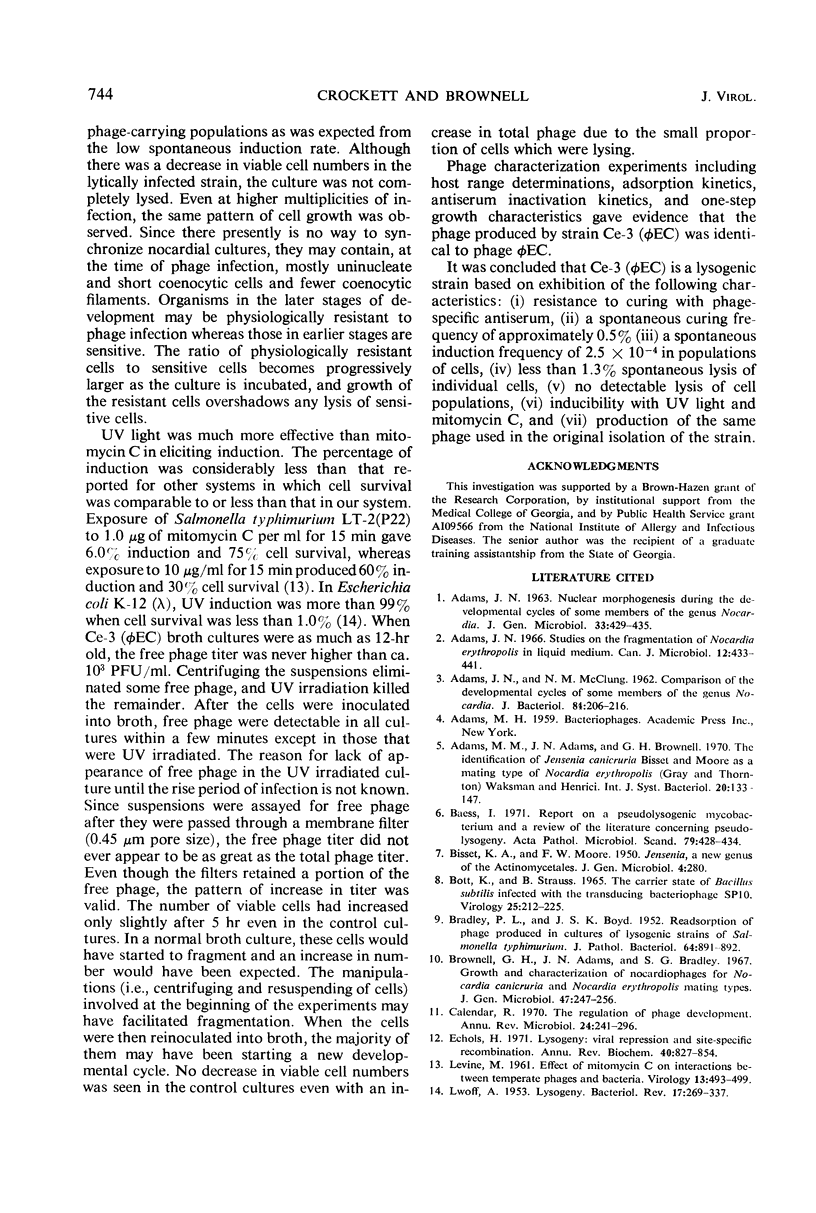
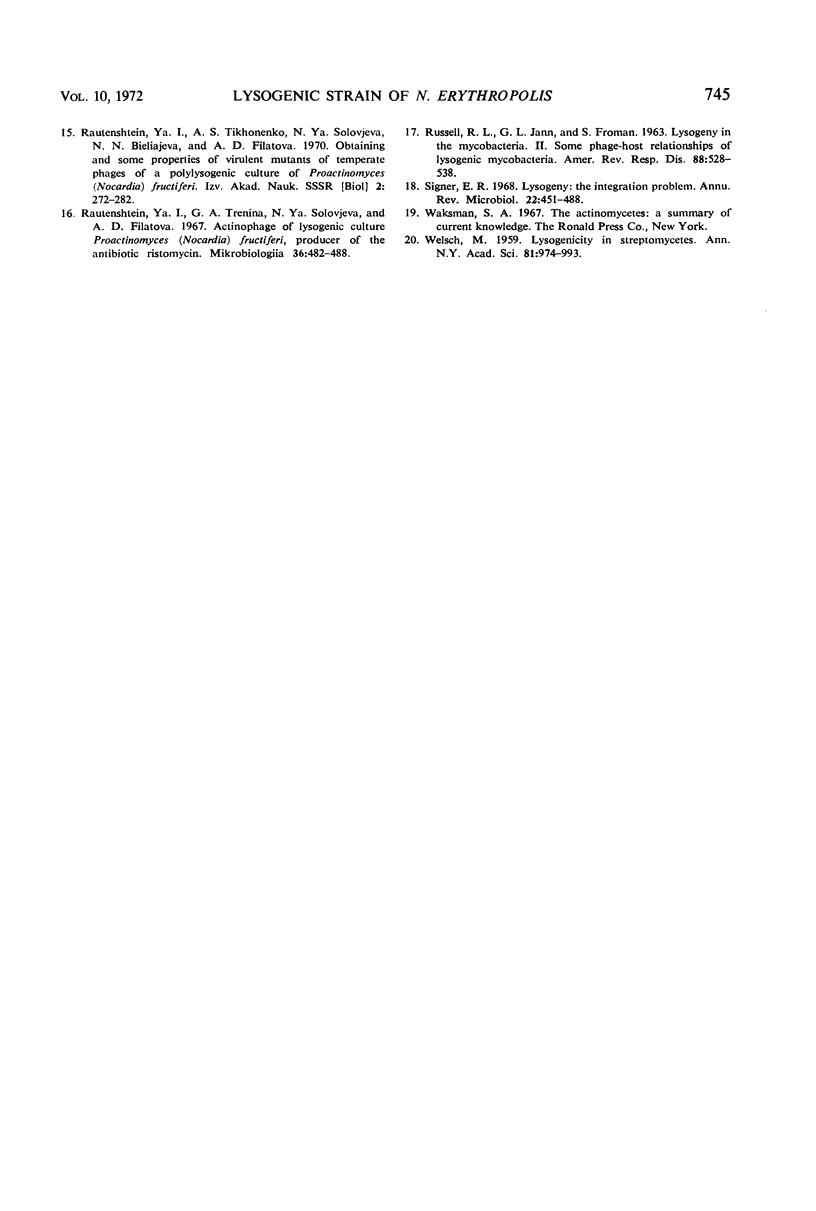
Selected References
These references are in PubMed. This may not be the complete list of references from this article.
- ADAMS J. N., McCLUNG N. M. Comparison of the developmental cycles of some members of the genus Nocardia. J Bacteriol. 1962 Aug;84:206–216. doi: 10.1128/jb.84.2.206-216.1962. [DOI] [PMC free article] [PubMed] [Google Scholar]
- ADAMS J. N. NUCLEAR MORPHOGENESIS DURING THE DEVELOPMENTAL CYCLES OF SOME MEMBERS OF THE GENUS NOCARDIA. J Gen Microbiol. 1963 Dec;33:429–435. doi: 10.1099/00221287-33-3-429. [DOI] [PubMed] [Google Scholar]
- Adams J. N. Studies on the fragmentation of Nocardia erythropolis in liquid medium. Can J Microbiol. 1966 Jun;12(3):433–441. doi: 10.1139/m66-064. [DOI] [PubMed] [Google Scholar]
- BISSET K. A., MOORE F. W. Jensenia, a new genus of the actinomycetales. J Gen Microbiol. 1950 May;4(2):280–280. doi: 10.1099/00221287-4-2-280. [DOI] [PubMed] [Google Scholar]
- BOTT K., STRAUSS B. THE CARRIER STATE OF BACILLUS SUBTILIS INFECTED WITH THE TRANSDUCING BACTERIOPHAGE SP10. Virology. 1965 Feb;25:212–225. doi: 10.1016/0042-6822(65)90200-x. [DOI] [PubMed] [Google Scholar]
- BRADLEY P. L., BOYD J. S. K. Readsorption of phage produced in cultures of lysogenic strains of Salmonella typhi-murium. J Pathol Bacteriol. 1952 Oct;64(4):891–892. doi: 10.1002/path.1700640421. [DOI] [PubMed] [Google Scholar]
- Baess I. Report on a pseudolysogenic mycobacterium and a review of the literature concerning pseudolysogeny. Acta Pathol Microbiol Scand B Microbiol Immunol. 1971;79(3):428–434. doi: 10.1111/j.1699-0463.1971.tb00084.x. [DOI] [PubMed] [Google Scholar]
- Brownell G. H., Adams J. N., Bradley S. G. Growth and characterization of nocardiophages for Nocardia canicruria and Nocardia erythropolis mating types. J Gen Microbiol. 1967 May;47(2):247–256. doi: 10.1099/00221287-47-2-247. [DOI] [PubMed] [Google Scholar]
- Calendar R. The regulation of phage development. Annu Rev Microbiol. 1970;24:241–296. doi: 10.1146/annurev.mi.24.100170.001325. [DOI] [PubMed] [Google Scholar]
- Echols H. Lysogeny: viral repression and site-specific recombination. Annu Rev Biochem. 1971;40:827–854. doi: 10.1146/annurev.bi.40.070171.004143. [DOI] [PubMed] [Google Scholar]
- LEVINE M. Effect of mitomycin C on interactions between temperate phages and bacteria. Virology. 1961 Apr;13:493–499. doi: 10.1016/0042-6822(61)90280-x. [DOI] [PubMed] [Google Scholar]
- LWOFF A. Lysogeny. Bacteriol Rev. 1953 Dec;17(4):269–337. doi: 10.1128/br.17.4.269-337.1953. [DOI] [PMC free article] [PubMed] [Google Scholar]
- RUSSELL R. L., JANN G. J., FROMAN S. LYSOGENY IN THE MYCOBACTERIA. II. SOME PHAGE-HOST RELATIONSHIPS OF LYSOGENIC MYCOBACTERIA. Am Rev Respir Dis. 1963 Oct;88:528–538. doi: 10.1164/arrd.1963.88.4.528. [DOI] [PubMed] [Google Scholar]
- Rautenshtein Ia I., Trenina G. A., Solov'eva N. Ia, Filatova A. D. Aktinofag lizogennoi kultury Proactinomyces (Nocardia) fructiferi--produtsenta antibio- tika ristomitsina. Mikrobiologiia. 1967 May-Jun;36(3):482–488. [PubMed] [Google Scholar]
- Signer E. R. Lysogeny: the integration problem. Annu Rev Microbiol. 1968;22:451–488. doi: 10.1146/annurev.mi.22.100168.002315. [DOI] [PubMed] [Google Scholar]
- WELSCH M. Lysogenicity in streptomycetes. Ann N Y Acad Sci. 1959 Sep 30;81:974–993. doi: 10.1111/j.1749-6632.1959.tb49383.x. [DOI] [PubMed] [Google Scholar]


